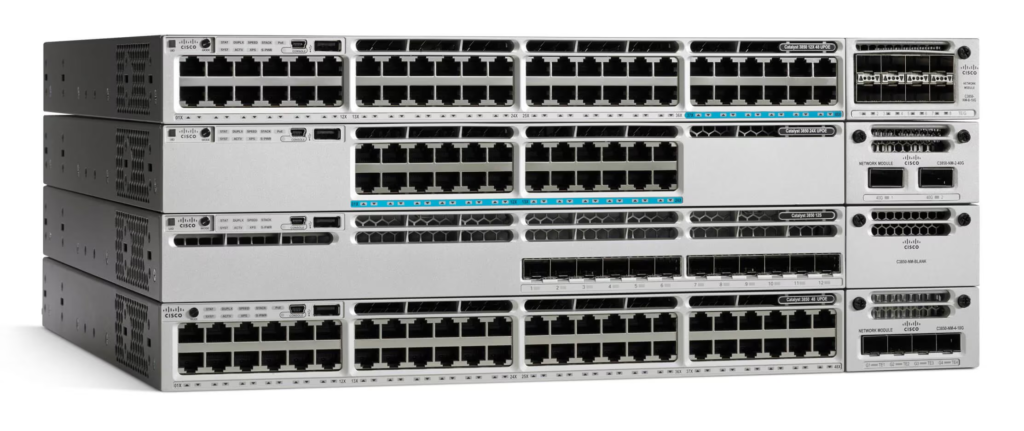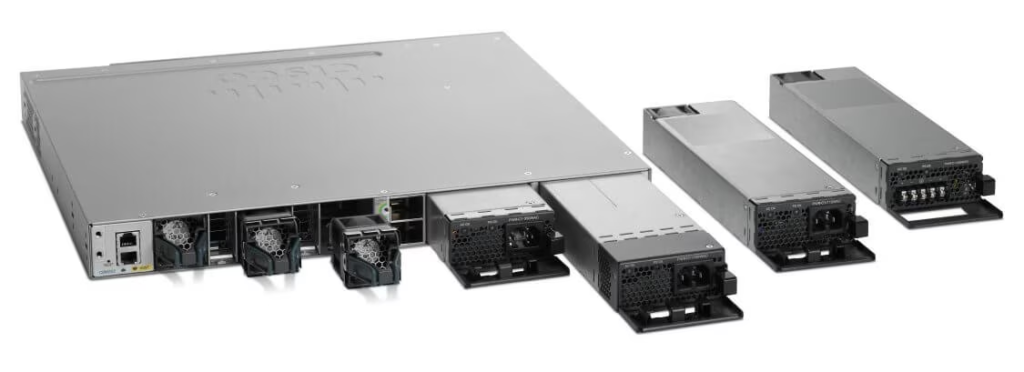
Cisco has for so long been a beacon of knowledge in the changing world of networking in terms of delivering high-performance, reliable, and highly scalable solutions. Like the Cisco Catalyst 3850 and the Catalyst 2960L switches, among the best-selling solutions at Cisco, these switches are very popular among businesses willing to augment their network infrastructure. Which one, however, is just the right one for you? Let’s strip down these top-selling Cisco switches and simplify the critical specifications, usages, and advantages for you.
Key Features of Cisco Catalyst 3850

- High Performance and Scalability
- The Catalyst 3850, made especially to run enterprise applications at better throughput, is capable of stacking up to 480 Gbps; ensuring that the network is prepared for anything a growing company may demand.
- Advanced Layer 3 Capabilities
- This switch performs remarkably because it is equipped with advanced Layer 3 routing features such as OSPF, EIGRP, and BGP routing. It is designed to operate in highly complex network environments, taking care of effective traffic managements.
- Power over Ethernet (PoE+)
- Supporting PoE+ on each port with a maximum output of 30 Watts allows a smooth operation of power-hungry devices such as IP phones, wireless access points, and surveillance cameras.
- Integration with Cisco DNA
- The Catalyst 3850 works with Cisco’s Digital Network Architecture (DNA) and offers analytics, automation, and centralized management for advanced devices.
- Modular Design
- Flexible module slots allow configuration options to fit your requirements, making the switch adaptable to your needs.
Key Features of Cisco Catalyst 2960L

- Compact and Energy Efficient
- The Catalyst 2960L directly takes on simplicity and energy efficiencies that would make it ideal for small to mid-size organizations.
- Layer 2 Switching
- And, offers dependable layer 2 switching with basic layer 3 static routing, particularly suited to less complicated networks.
- Power over Ethernet (PoE)
- Delivers maximum power of 15.4 W per port to connect standard PoE powered devices.
- Enhanced Security Features
- Robust security for your network has been ensured through the integration of Cisco TrustSec, 802.1X, and MACsec encryption.
- Cost-Effective Solution
- It is indeed a perfect option for the budgeted companies to save on costs without sacrificing perfect performance.
Use Cases: Catalyst 3850 vs. Catalyst 2960L
Catalyst 3850
- Large Enterprises and Data Centers
- This is the perfect Catalyst 3850 equipment: a solution for large scaled networks with demanding performance and complicated routing needs.
- IoT and High-Density Deployments
- It is therefore very well suited for environments with a large number of connected devices, such as IoT setups or big offices, due to the fact that this has PoE+ support as well as high stacking capabilities.
- Advanced Traffic Management
- Such organizations are leveraged by its superior Layer 3 capabilities and integration into Cisco DNA which have a range of different traffic flows.
- Small to Medium-Sized Businesses
- The small size and budget friendliness of the Catalyst 2960L make it a serious contender for small and medium-sized businesses with simple networking requirements.
- Branch Offices
- Perfect for branch offices or remote sites requiring basic connectivity and security.
- Energy-Conscious Environments
- Energy saving design effects low costs of operation along with reliable efficiency.
Benefits of Choosing the Right Switch
- Optimized Performance
- An appropriate switch selection matching the requirements of your network will lead to improved operations and fewer bottlenecks.
- Scalability for Growth
- On the flip side, a switch that will grow with your business may save significant costs down the line. This will save you from having to undertake frequent upgrading.
- Enhanced Security
- The network is protected with strong security features that guard it against any threat and comply with requirements on industry standards.
- Cost Efficiency
- Choosing a switch customization according to personal needs avoids both over investment in unnecessary features and underperformance.
Our Commitment to Quality
At Jazz Cyber Shield, we offer pure, original, 100% Cisco Catalyst Switches with clean serial numbers. The namesake meaning and definition are very clear and value-based for your network infrastructure. Whether the performance is high, like the Catalyst 3850, or it is merely economical, such as that found in Catalyst 2960L, you can trust us for the delivery of top-quality products exactly as prescribed
Conclusion
Between Cisco Catalyst 3850 and Catalyst 2960L, choose based on the size and complexity of the network for an effective and specific requirement. Catalyst 3850 supports high-performance, large-scale networks with advanced routing capabilities, while Catalyst 2960L supports economical energy-saving solutions for small and medium businesses and simpler networks.
Getting the best switch from Cisco guarantees that one has a network infrastructure that is reliable, secure, and ready for the future. Be a sound decision maker by evaluating present and future needs and, in today’s fast-paced world of competition, leverage the most sophisticated technology of Cisco.




Great breakdown of the Catalyst 3850 vs. 2960L—especially helpful for anyone weighing scalability against simplicity. One thing I’d add is that considering long-term maintenance costs can be just as important as initial performance specs when choosing between the two. Would love to see a future post diving into real-world use cases for each model.
Really helpful comparison! I’ve been debating between the 3850 and 2960L for our new office setup. This article made the differences in performance and scalability crystal clear. The 3850 definitely seems like the better long-term investment. Also, shoutout to Jazz Cyber Shield for helping us with network security during the upgrade process—top-notch service!
Great overview! One thing I’ve found when working with the 2960L is that it’s a solid option for edge deployments, especially where budget and simplicity matter more than stacking or high throughput.
I appreciate how this breakdown makes it easier to understand which type of switch fits different network scenarios. Too often, businesses overlook future scalability when choosing hardware, so this kind of comparison is super helpful.
I appreciate how this post outlines the use cases for each model. It might also be helpful to touch on long-term firmware support or ease of integration with existing systems, since those factors often influence real-world deployment decisions.
Interesting comparison—while both models are strong performers, I’ve found the modular flexibility of the 3850 especially useful in more dynamic network environments. Curious to see how others are balancing performance vs. simplicity.
This is super helpful for teams managing mid-sized networks—finding the right balance between performance and cost can really impact long-term strategy. It’s always a win to see a clear breakdown like this when choosing infrastructure upgrades.
I appreciate the detailed comparison between the two switches. The scalability factor of both models is key when planning for future growth. I’m curious, how do you think these models compare in terms of energy efficiency?
Solid comparison! I’ve found that power and stacking capabilities often influence the final decision—worth diving into for anyone evaluating these models.
Understanding the trade-offs between these two models can really help in optimizing a company’s network infrastructure. It’s all about matching the right switch with the organization’s needs.
Great overview! It might also be useful to touch on how software features like Cisco IOS versions differ between these models—sometimes the software stack makes or breaks a deployment.
It’s great to see a breakdown between the Catalyst 3850 and 2960L—two models that often get lumped together despite serving different needs. I’d be curious to hear how deployment environments (like campus vs. branch office) factor into the choice between them.
Interesting comparison! I’ve found that the 3850’s stackable design really makes a difference in scaling for larger networks—do you see that as a major factor in its popularity?
Appreciate the clear comparison between the 3850 and 2960L—especially for teams planning infrastructure upgrades. It might also be interesting to discuss how these models perform under heavier loads or in more dynamic environments.
Great comparison—Blog Comment Creationit’s always helpful to see the strengths of both models laid out clearly. The 3850’s advanced features definitely suit more complex enterprise setups, while the 2960L seems like a practical choice for simpler access-layer deployments. Would be interesting to see a follow-up that explores how these switches perform in hybrid cloud environments too.